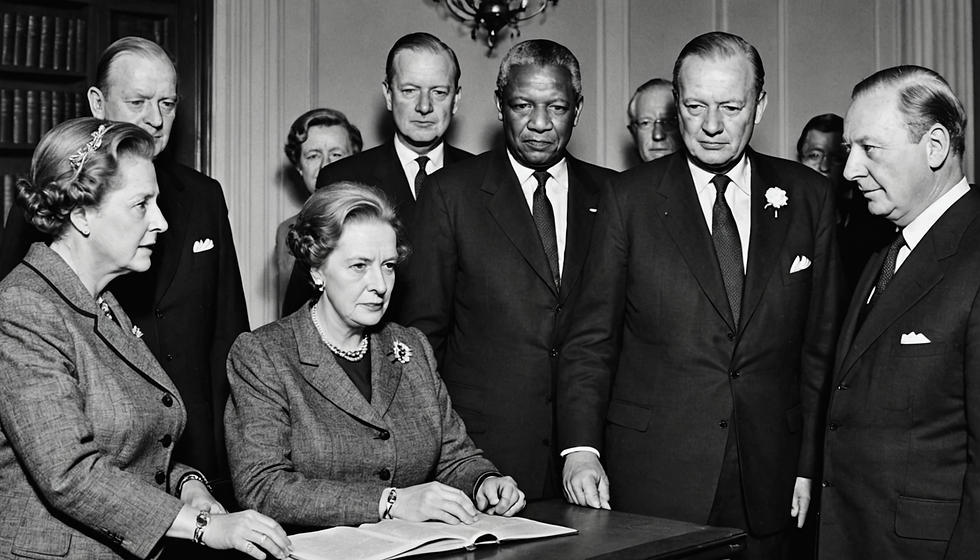Thomas-Killman Conflict Mode Instrument for Negotiations
- R.M. Boylan

- Feb 19
- 2 min read
Updated: Feb 26
Thomas-Kilmann Conflict Mode Instrument
R.M. Boylan BSc. M.A.

The Thomas-Kilmann Conflict Mode Instrument (TKI)
I use the Thomas-Kilmann Conflict Mode Instrument (TKI) when I am analyzing a negotiation situation specifically how the other party might play out. I know that I tend to be "Accommodating" or "Collaborating" which can sometimes be a blindspot with a competing or domineering type. The instrument has its shortcomings as it does not account for deceitful, hoodwinking, malicious or otherwise heinous behaviours.
The Thomas-Kilmann Conflict Mode Instrument (TKI) is a widely recognized tool used to assess an individual's behavior in conflict situations. Developed by Kenneth W. Thomas and Ralph H. Kilmann in the 1970s, the TKI identifies five distinct conflict-handling modes based on two dimensions: assertiveness and cooperativeness.
Conflict Modes
Competing: Assertive and uncooperative, this mode is characterized by a desire to win at the expense of others.
Accommodating: Unassertive and cooperative, this mode involves yielding to others' needs or desires.
Avoiding: Unassertive and uncooperative, this mode involves sidestepping the conflict altogether.
Collaborating: Assertive and cooperative, this mode seeks to find a win-win solution that satisfies the needs of all parties.
Compromising: Intermediate in both assertiveness and cooperativeness, this mode aims for a mutually acceptable solution that partially satisfies both parties.
Purpose and Use
The TKI is used primarily in organizational settings, conflict resolution training, and personal development. It serves several purposes:
To help individuals understand their own conflict-handling styles.
To promote awareness of others' styles, enhancing empathy and communication.
To provide a framework for analyzing conflicts and developing strategies to manage them effectively.
Application in Negotiation
In negotiation contexts, the TKI can be particularly useful for analyzing relationships and understanding the other party's conflict-handling style. By identifying whether the other party tends to compete, accommodate, avoid, collaborate, or compromise, negotiators can tailor their approach to foster better communication and collaboration.
Achieving Win-Win Agreements
The best position in a negotiation to achieve a win-win agreement is to adopt the collaborating mode. This involves:
Open communication to understand both parties’ needs and interests.
Creatively exploring options that satisfy both sides.
Building trust and rapport to enhance cooperation.
By focusing on collaboration, negotiators can work towards solutions that are beneficial for all parties involved, leading to more sustainable and satisfying outcomes.
References and Resources
Thomas, K. W., & Kilmann, R. H. (1974). Thomas-Kilmann Conflict Mode Instrument. TKI Publishing.
Fisher, R., Ury, W. L., & Patton, B. (2011). Getting to Yes: Negotiating Agreement Without Giving In. Penguin Books.
Deutsch, M. (1973). The Resolution of Conflict: Constructive and Destructive Processes. Yale University Press.
Wilmot, W. W., & Hocker, J. L. (2011). Interpersonal Conflict. McGraw-Hill.
In summary, the Thomas-Kilmann Conflict Mode Instrument is a valuable tool for understanding and managing conflict in various contexts, particularly in negotiations. By fostering collaborative approaches, parties can work towards agreements that meet the needs of all involved.





Comments